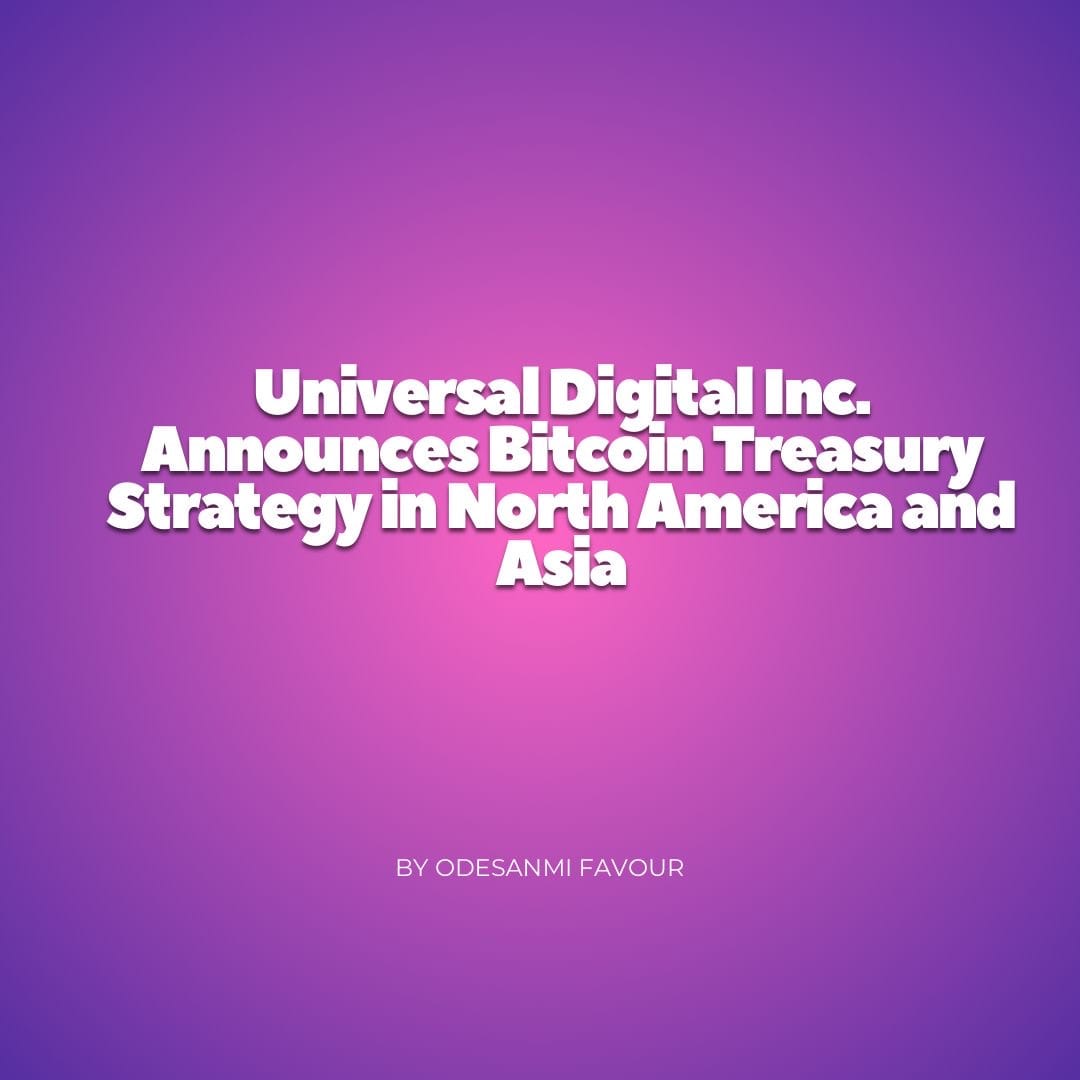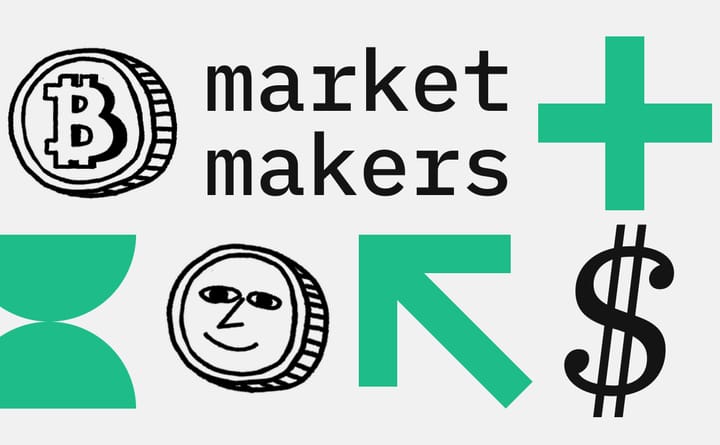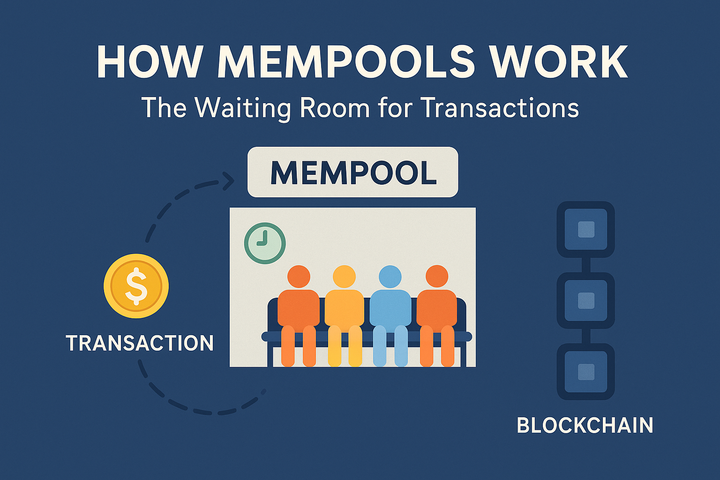Universal Digital Inc. Announces Bitcoin Treasury Strategy in North America and Asia

introduction
On June 16, 2025, Universal Digital Inc. (CSE: LFG, FSE: 8R20), a Canadian investment company focused on digital assets and blockchain technology, announced its Bitcoin Treasury Strategy, a bold move to integrate Bitcoin as a core reserve asset in its capital allocation framework. The strategy involves divesting its altcoin holdings to accumulate Bitcoin, aiming to enhance long-term net asset value and align with the global trend of institutional adoption of digital assets. Additionally, Universal Digital signed a non-binding Memorandum of Understanding (MOU) with GFA Co., Ltd., a Tokyo Stock Exchange-listed financial and technology group, to promote Bitcoin treasury models in Asia’s $25 trillion public market. This initiative, targeting markets like Japan, South Korea, and Hong Kong, underscores the growing institutional appetite for Bitcoin as a strategic asset.
In this article, we explore the motivations, mechanics, and implications of Universal Digital’s strategy.
In this article, we would explore:
1. The Mechanics of Universal Digital’s Bitcoin Treasury Strategy
2. Strategic Partnership with GFA to Expand in Asia
3. Implications for Institutional Bitcoin Adoption and Market Trends
The Mechanics of Universal Digital’s Bitcoin Treasury Strategy
Universal Digital’s Bitcoin Treasury Strategy marks a deliberate shift toward holding Bitcoin as a long-term reserve asset to strengthen its balance sheet and capitalize on the cryptocurrency’s growing acceptance among institutions. The company has begun divesting its altcoin holdings, with proceeds reallocated to Bitcoin accumulation under a transparent, phased reserve model. This approach mirrors strategies adopted by companies like MicroStrategy, which holds over $20 billion in Bitcoin as of June 2025. Universal Digital’s CEO, Tim Chan, emphasized that the strategy aims to enhance financial flexibility and hedge against currency fluctuations, positioning Bitcoin as a complementary reserve asset alongside traditional holdings.
How It Works
- Altcoin Divestment: Universal Digital is selling its portfolio of altcoins, such as Ethereum and Solana, to fund Bitcoin purchases. This reduces exposure to volatile altcoins while prioritizing Bitcoin’s perceived stability and long-term value.
- Bitcoin Accumulation: The company is adopting a dollar-cost averaging approach to acquire Bitcoin, minimizing market timing risks. For example, if Universal Digital liquidates $10 million in altcoins, it could acquire approximately 150 BTC at a price of $66,000 per Bitcoin, based on June 2025 market rates.
- Transparency and Governance: The strategy includes regular disclosures to shareholders, ensuring compliance with Canadian securities laws. This transparency addresses investor concerns about crypto volatility, as noted in the company’s June 3, 2025, annual information form.
For Example: Imagine Universal Digital holding $50 million in altcoins like Cardano and Polkadot. By selling these at market prices, the company could acquire 750 BTC at $66,000 each, creating a Bitcoin reserve worth $49.5 million. If Bitcoin’s price rises to $100,000 by 2027, as some analysts predict, this reserve would appreciate to $75 million, boosting the company’s net asset value by 50%. This potential upside, combined with Bitcoin’s low correlation to traditional assets, makes it attractive for institutional portfolios.
Impact
The strategy aligns Universal Digital with a growing list of firms adopting Bitcoin treasuries, including Tesla and Block, which collectively hold over $30 billion in BTC. However, risks remain, as outlined in the company’s risk disclosures: altcoin liquidation may yield unfavorable prices, and Bitcoin’s volatility could impact short-term financials. Posts on X, such as @cryp_era’s, highlight enthusiasm for the shift to Bitcoin but caution about market timing risks in divesting altcoins.
Strategic Partnership with GFA to Expand in Asia
Universal Digital’s MOU with GFA Co., Ltd. (TSE: 8783), signed on June 12, 2025, aims to introduce Bitcoin treasury models to Japanese listed companies, tapping into Asia’s $25 trillion public market. According to Chainalysis, Eastern Asia accounted for 8.9% of global on-chain crypto transaction volume from July 2023 to June 2024, driven by institutional investors in Japan, South Korea, and Hong Kong. The partnership will explore Bitcoin reserve models, capital-raising tools like warrants, and blockchain-based corporate structures, positioning Universal Digital as a pioneer in Asia’s digital economy.
Partnership Details
- Bitcoin Reserve Models: The MOU focuses on helping Japanese companies integrate Bitcoin into their treasuries, similar to Universal Digital’s model. For instance, a Japanese firm could allocate 5% of its cash reserves to Bitcoin, enhancing balance sheet resilience.
- Capital-Raising Tools: Universal Digital and GFA will develop financial instruments, such as warrants or convertible bonds, to fund Bitcoin acquisitions. This could enable a company to raise $100 million through a bond offering, using proceeds to buy 1,500 BTC.
- Web3 and Cultural IP: The partnership includes initiatives to link Bitcoin adoption with Japan’s cultural IP, such as integrating BTC payments into gaming or NFT ecosystems, leveraging GFA’s expertise in gaming and cybersecurity.
For Example: Consider a Japanese tech firm with $200 million in cash reserves. Under the MOU, Universal Digital and GFA could structure a $20 million warrant offering, allowing the firm to acquire 300 BTC. If Bitcoin appreciates 50% over two years, the firm’s reserve would grow to $30 million, generating a $10 million gain. Additionally, the firm could use Bitcoin for cross-border payments in its gaming division, reducing transaction costs from 2% to 0.1%, saving $500,000 annually on $25 million in payments.
Impact
The MOU positions Universal Digital to capitalize on Asia’s growing crypto adoption, particularly in Japan, where regulatory clarity under the Financial Services Agency supports digital assets. GFA’s CEO, Gen Matsuda, noted that Universal Digital’s crypto expertise complements GFA’s market knowledge, creating a “strong team” for Japan’s digital economy. However, the non-binding nature of the MOU introduces risks, as a failure to finalize a binding agreement could delay expansion, as noted in the company’s risk disclosures.
Implications for Institutional Bitcoin Adoption and Market Trends
Universal Digital’s Bitcoin Treasury Strategy reflects a broader trend of institutional adoption, with companies like Marathon Digital and Hut 8 holding significant BTC reserves. The strategy could accelerate Bitcoin’s integration into corporate finance, particularly in Asia, while influencing market dynamics and investor sentiment. As Bitcoin’s price hovers around $66,000 in June 2025, with analysts predicting a $108,900 resistance level, Universal Digital’s move signals confidence in BTC’s long-term value.
Key Implications
- Institutional Adoption: Universal Digital’s strategy could inspire other firms to adopt Bitcoin treasuries, especially in Asia, where institutional interest is rising. For example, South Korean firms like Samsung could follow suit, allocating 1–2% of their $70 billion cash reserves to BTC, adding $1.4 billion to Bitcoin’s market cap.
- Market Impact: Increased corporate buying could drive Bitcoin’s price higher, with Crypto News estimating a potential $11 billion treasury race in 2025. Universal Digital’s accumulation, though smaller, contributes to this trend, potentially reducing BTC’s circulating supply and fueling bullish sentiment.
- Global Financial Landscape: By promoting Bitcoin as a reserve asset, Universal Digital aligns with a shift toward digital finance, as seen in El Salvador’s Bitcoin adoption and BlackRock’s BTC ETF holdings. This could normalize crypto in corporate balance sheets, enhancing governance and custody frameworks.
For Example: A Japanese retailer with $500 million in annual revenue could adopt Universal Digital’s model, allocating $10 million to Bitcoin. If BTC rises to $100,000 by 2026, the retailer’s reserve would grow to $15 million, a 50% return, outperforming traditional bonds yielding 2–3%. Additionally, the retailer could use Bitcoin for supply chain payments, cutting cross-border fees by $200,000 annually. This dual benefit—capital appreciation and operational efficiency—illustrates Bitcoin’s appeal to institutions.
Challenges and Outlook
Risks include Bitcoin’s volatility, which could lead to losses if prices drop, and the potential failure to liquidate altcoins at favorable prices, as noted in Universal Digital’s risk disclosures. Regulatory uncertainty in Asia, despite Japan’s progressive stance, could also hinder adoption. X users like @blockz_hub expressed optimism about Universal Digital’s “strategic partnerships,” but others, like @johnmorganFL, cautioned about market manipulation risks in crypto. Despite these challenges, the strategy positions Universal Digital as a leader in the evolving financial landscape, potentially catalyzing a wave of corporate Bitcoin adoption.
Conclusion
Universal Digital Inc.’s Bitcoin Treasury Strategy, announced on June 16, 2025, marks a pivotal step toward integrating Bitcoin into corporate finance in North America and Asia. By divesting altcoins to accumulate Bitcoin and partnering with GFA to target Asia’s $25 trillion public market, the company is capitalizing on institutional demand for digital assets. The strategy’s transparent, phased approach and focus on Japan’s digital economy could drive significant adoption, with potential to boost Bitcoin’s market cap and normalize its use in corporate treasuries. While risks like market volatility and regulatory hurdles remain, Universal Digital’s bold move, backed by CEO Tim Chan’s vision, aligns with global trends and positions the company as a pioneer in the TradFi-crypto convergence. As institutional appetite grows, this strategy could reshape corporate finance, making Bitcoin a mainstream reserve asset.



Comments ()